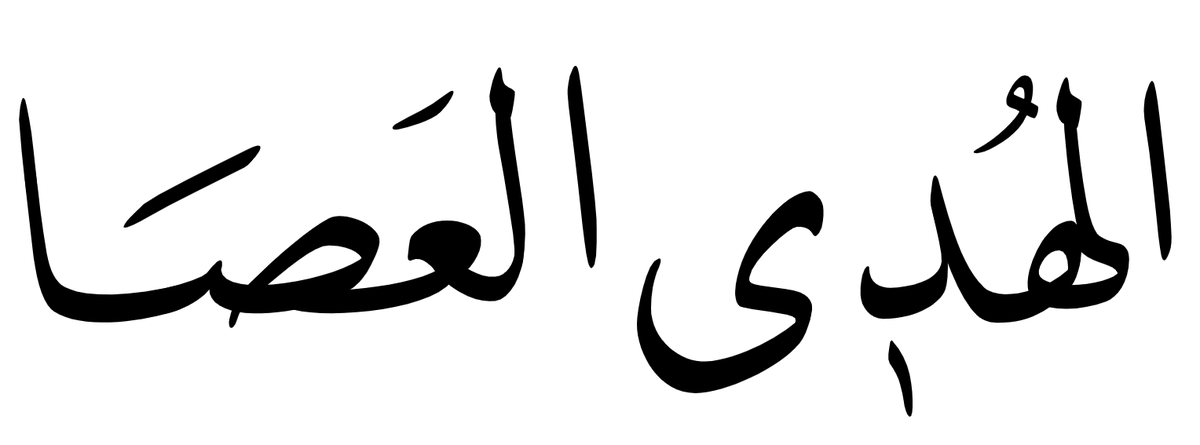
The Arab grammarians describe the occurrence of /ē/ (called ʾimālah) in word-final position of verbs and nouns, e.g. banē "he built" and ḥublē "pregnant". This thread discusses the disagreements between different groups of grammarians, and how the opinions develop. 🧵 

The earliest and most famous grammarian Sībawayh (d. 180 AH) tells us: nouns which in Classical Arabic end in -ā, whose third root consonant is yāʾ undergo ʾimālah, while those whose third root consonant is wāw do not, thus: al-hudē "the guidance" but al-ʿaṣā "the stick". 

One is sure to notice that this distribution aligns with how the final -ā is spelled. If it is spelled with yāʾ it is pronounced -ē, if it is spelled with ʾalif it is spelled -ā. This is certainly not a coincidence, the spelling seems to retain a memory of this distinction.
Surprisingly, however, Sībawayh is very explicit, when it comes to verbs you do not make a distinction between root consonants and always apply ʾimālah. Thus: hadē, hadaytu "to guide" but also ġazē, ġazawtu "to raid" 



This is a point on which our Basran grammarian Sībawayh disagreed with his Kufan contemporaries. Al-Farrāʾ (d. 207 AH) reports no distinction between verbs and nouns in this case, third yāʾ verbs = -ē, third wāw verbs = -ā, thus retaining the correspondence with the orthography. 



So this puts us in a weird place. Neither Sībawayh nor al-Farrāʾ seem to give any indication that they are aware of their conflicting opinions. How come they cannot agree on this? What are their sources that they can seemingly come to different answers?
One gets the impression that the difference of opinion doesn't stem from a difference in sources, but rather a difference in theory. Sībawayh argues that since the wāw of, e.g. ġazā can turn into a yāʾ (passive ġuziya, IVth stem ʾaġzē/ʾaġzaytu) it should always be treated thus.
The Kufans didn't seem to find this a very compelling explanation, and simply went with the etymological origin (which honestly looks more "natural", linguistically). This is indeed how the Kufan Quranic reciters (Ḥamzah, al-Kisāʾī, Ḥamzah) recite: Q79:27 banē but Q3:38 daʿā.
The Kufan reading is wrong by Sībawayh's definition. We find an interesting split here. In Quranic recitation the Kufan opinion dominates (also for example for the Medinan recitation Warš ʿan Nāfiʿ), Sībawayhs opinion seems to become mainstream among the grammarians.
So the famous al-Zamaḫšarī (d. 538) simply exclusively reports Sībawayh's opinion. No mention of the Kufan opinion or even acknowledgement that it exists. Zamaḫšarī tends to stick close to Sībawayh's kitāb in structure, just writes much clearer and succinctly. 

The much earlier al-Mubarrad (d. 285 AH), famous for his frequent hard criticisms of Sībawayh, is one of the sources that I know that acknowledges both options, but he sides with the Kufans, calling ʾimālah in this case ugly and says that it is "barely acceptable". 

Al-ʾAḫfaš al-ʾAwsaṭ (d. 215 AH), one of Sībawayh's students in his Maʿānī al-Qurʾān is more diplomatic saying that many of the Arabs pronounce it without ʾImālah first (seemingly taking that as the default) but that you may apply ʾImālah and many people do so. 



I haven't really explored the later grammarians yet besides al-Zamaḫšarī.
Are there any other grammarians that acknowledge the two positions but side with Sībawayh's option instead?
Is my hunch correct that later grammarians mostly side with Sībawayh implicitly? Do let me know!
Are there any other grammarians that acknowledge the two positions but side with Sībawayh's option instead?
Is my hunch correct that later grammarians mostly side with Sībawayh implicitly? Do let me know!
If you enjoyed this thread and want me to support me to continue doing threads like this, please consider buying me a coffee.
ko-fi.com/phdnix.
If you want to support me in a more integral way, you can become a patron on Patreon!
patreon.com/PhDniX
ko-fi.com/phdnix.
If you want to support me in a more integral way, you can become a patron on Patreon!
patreon.com/PhDniX
• • •
Missing some Tweet in this thread? You can try to
force a refresh











